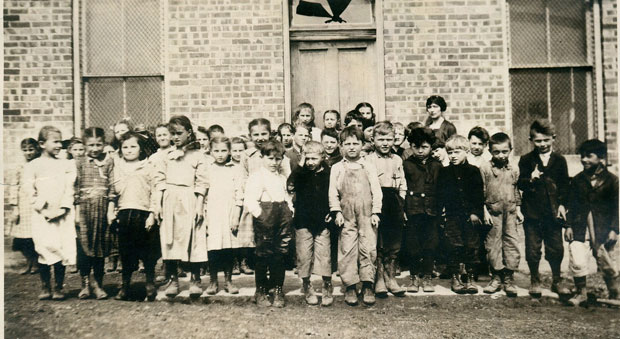The Early 1800s
The earliest history of Ganister can be found not under the name Ganister but rather Franklin Forge. In the 19th century the not-so-distant town of Pittsburgh would soon begin an economic boom based primarily on the production of iron and steel and to fuel the boom, the steel mills needed raw materials or at least only slightly refined materials. Heading east from Pittsburgh, one quickly encounters the Allegheny Front as it slowly rises to a crest from which one descends into the ridges and valleys of the Appalachian Mountains. The mountains, not tall and geologically young but rather old and weathered, were host to thriving forests in the valleys lined with steams and rivers and limestone in the rock faces flanking the valley floors.
Steel, an alloy of iron and carbon, first required pig iron, itself a product of iron and coke that utilised limestone to remove impurities. The carbon, which makes steel brittle, is then largely removed in a second step. In the early 1800s, settlers from eastern Pennsylvania moved into the area near Williamsburg and Altoona with the intention of using the trees, limestone, and waterpower for forging their own iron.
For the history of Ganister, Daniel and John Royer are perhaps the two men with which the story should start properly. These two men bought land along the banks of the Juniata River—the Frankstown branch—where they would have access to those three requirements for a successful furnace. And indeed, the two were successful enough that they began to build several furnaces and forges the area. Eventually, in 1820, Daniel’s son, Samuel, bought his own land for a forge. His tract of land was located at the confluence of Piney Creek and the Juniata River, not far from his father’s forges in what would become the village of Royer.
Samuel Royer built his forge in 1829 and named it Franklin Forge for the county of his birth. Through at least 1854 the forge remained in operation, casting pots, pans, kettles, and alike with pig iron produced by the nearby Springfield Furnace, Canoe Furnace, and Juniata Furnace. In 1843, Samuel Royer sold Franklin Forge to Elias Hoover and Daniel H. Royer.
1890–1900
The 1890s were likely one of the most important defining decades of Ganister. In 1895, the Journal of Pennsylvania Schools reported that the Woodbury Township had opened a school-house in Franklin Forge. The journal gave a brief description of the school as a “single-room brick structure furnished in hard pine, and is substantial and complete in every respect. It is supplied with slate blackboard and patent furniture.” This became the school for at least two, perhaps three, generations of children living in the Ganister area. Situated atop a hill, those children not living along the ridge would have to climb the hill, a difference of a few hundred feet in elevation, to get to class.

From an article appearing in the New York Times on 10 November 1896, the Pittsburgh Limestone Company leased land at Ganister for its quarrying operations that same year. It would be in this quarry, and at least one nearby quarry operated by the Saint Clair Limestone Company—exact date of opening yet unknown—that would provide industry for the soon-to-be rapid population growth.
1900–1920
More to come on this section. Perhaps the peak of the population, but also when the first families began to plant roots in the area. Golden Age of Immigration. Building of St. Mary’s Orthodox Church. World War I.
1920–1936
More to come on this section. The post (WWI) years when opportunities arise further west and some families begin to move away. Immigration is made more difficult by the quota system. The Great Depression. The Great Flood of 1936.
1936–1955
More to come on this section. The quarries begin to close and families move away. The challenges and struggles for those that stayed. World War II. The post (WWII) years begin. The Korean War.
1955–Today
More to come on this section. The modern age continues to reach Ganister. The grandchildren and great-grandchildren of the first immigrants flourish and move away. Closing of St. Mary’s Church.
Closing of St. Mary’s Church

On 14 November 2010, St. Mary’s Holy Assumption Church saw its final service as it prepared to close. At the height of the church’s population, a few hundred worshippers would fill the small building to its rafters, but, by 2010 the congregation was only six strong.
Sources:
- The Royer family, ironmasters of Blair County, Pennsylvania: Historical Sketch of Springfield Furnace, Cove Forge and Franklin Forge; W. Ray Metz & Floyd G. Hoenstine; 1951.
- The Iron Manufacturer’s Guide to the Furnaces, Forges and Rolling Mills of the United States with Discussions of Iron as a Chemical Element, an American Ore, and a Manufactured Article, in Commerce and in History; John Peter Lesley; 1859
- Pennsylvania School Journal
- The New York Times